Bourdain-isms
“Maybe you’re more familiar with the name, Okinawa, from this—as the setting for some of the most horrifyingly bloody battles of the Second World War.”
“What does it mean to be strong? It implies hardness and flexibility. Okinawa is a place with a fighting tradition—a history of ferocious resistance, but it’s nothing like what you might think. Not at all.”
“This is Okinawa, just south of mainland Japan. For all the relative rigidity of the mainland, Okinawa answers in its own unique way. Don’t eat the same thing each day. That’s boring. There’s even an Okinawan term for it, chanpurū, something mixed—bits borrowed from all over, served up for anyone to eat.”
“I’m not accusing anyone of gambling, but, um, I see some money changing hands.”
“In Okinawa, pork is king. OK, they’ve got tofu, too.”
“Okinawans love pork, every part of the magical animal, the pig.”
“Your mom would’ve been like a hipster hero.”
“The U.S. military came ashore in 1945, and to Okinawans it must seem like they never left. Today there are roughly 30,000 troops stationed on the island. Put that many Americans in a place, especially young, mostly male Americans, many of them homesick, and it tends to change the environment.”
“King Tacos is a small slice of Americana, both the mainstream America and it’s dark underbellies.”
“Tourism is probably the future of Okinawa. You have sunny beautiful weather, beaches. If the bases leave, it’s going to be big hotels and resorts and golf courses. Which is worse, Chinese tourists or American marines?”
“Okinawans may be easygoing and laid-back, but the island is also a relative hotbed of political activism, largely inspired by what Okinawans see as high-handed treatment from a central government with different cultural and historical traditions, who don’t consider their needs or priorities.”
“Much of Okinawa’s arable land suitable for farming—on an island whose whole traditional identity was built around farming—is eaten up by military bases.”
History by the numbers
-
3
Months of fighting on Okinawa during World War II
-
100,000
Japanese soldiers and Okinawan conscripts killed defending the island
-
150,000
Men, women, and children who lost their lives during the Battle of Okinawa
-
1,500
Number of U.S. ships that invaded Okinawa in 1945
-
182,000
Number of U.S. military who invaded during the Battle of Okinawa
-
30,000
Number of U.S. military stationed on the island today
Eats
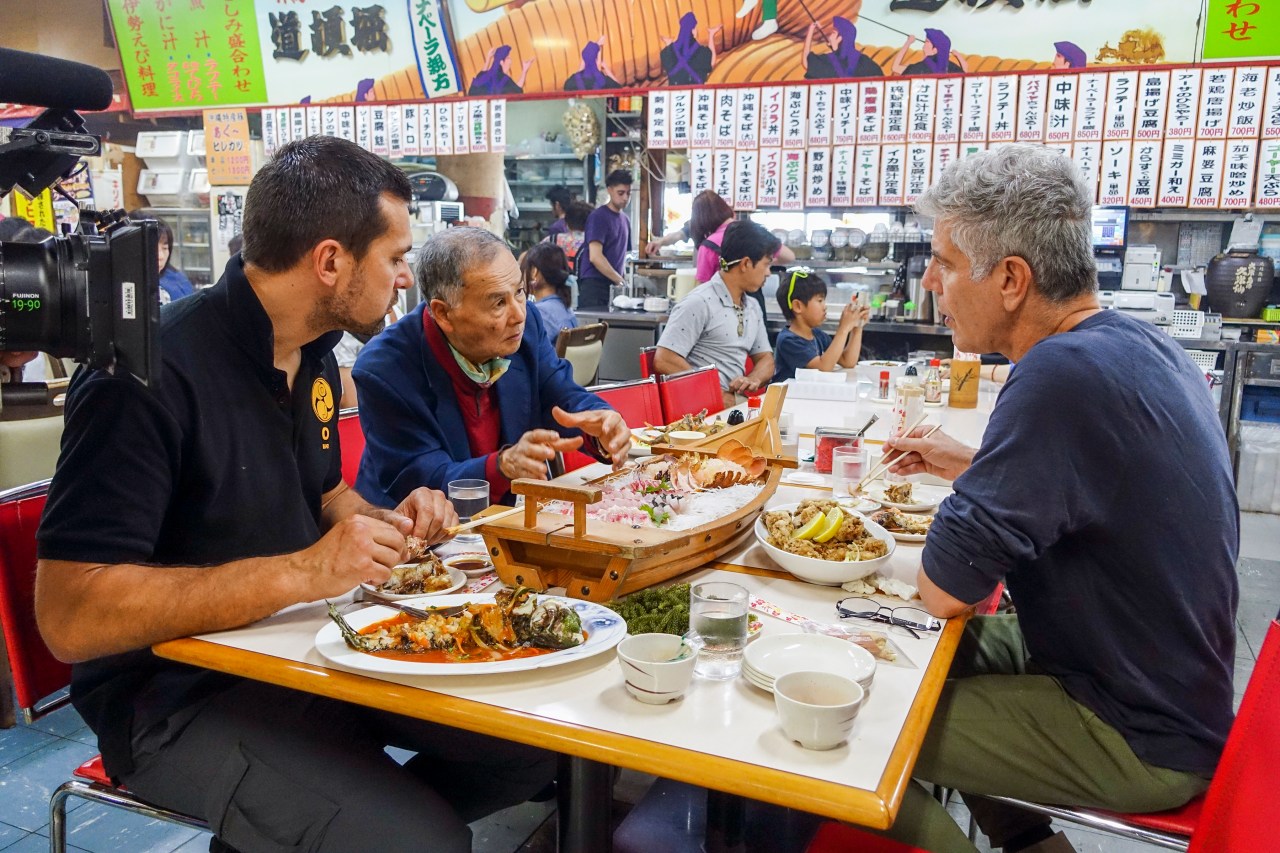
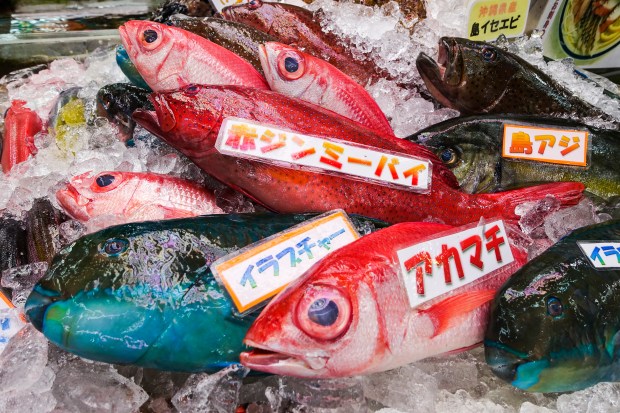
Makishi Public Market
2 Chome10-10 Matsuo
Naha, Okinawa Prefecture
(+81) 98-867-6560
Bourdain ate: snapper and parrot fish sashimi; sea grapes dressed in vinegar; gurukun (unofficial national fish of Okinawa) battered and deep-fried; porcupine fish, also battered and deep-fried.
Urizun
388-5 Asato
Naha, Okinawa Prefecture 902-0067
(+81) 98 885 2178
Bourdain had: Sake and quintessential Okinawan dishes, including tofuyo (fermented beancurd that packs a hefty punch, flavor-wise) and pork belly (cooked with stock, heavily infused with bonito flakes, pork ears thinly sliced and dressed in rice-wine vinaigrette, slow-roasted ribs brined in sake and seasonings.

King Tacos
424404 Kin
Kunigami District, Okinawa Prefecture 904-1201
(+81) 90 1947 1684
Bourdain ate: taco rice.
Dojo Bar
Asato
Naha, Okinawa Prefecture 902-0067
(+81) 98 911 3601
Bourdain had: drinks, horse meat and goat sashimi, pork belly, pickled pig’s ears, baked yam
Gettouan
2 Chome-16-49 Matsuo
Naha, Okinawa Prefecture 900-0014
(+81) 98 863 1421
Bourdain ate: Tundaabun (multiple bite-size portions served in an elegant lacquered dish) of sliced squid; swordfish wrapped in seaweed and simmered in stock and fermented sake; dried sea snake, slow-simmered; burdock root wrapped in pork loin, slow-cooked in hot sauce; taro flash-fried and dressed with sugar and soy; pork shoulder dredged in black sesame, then steamed.

Sidekicks
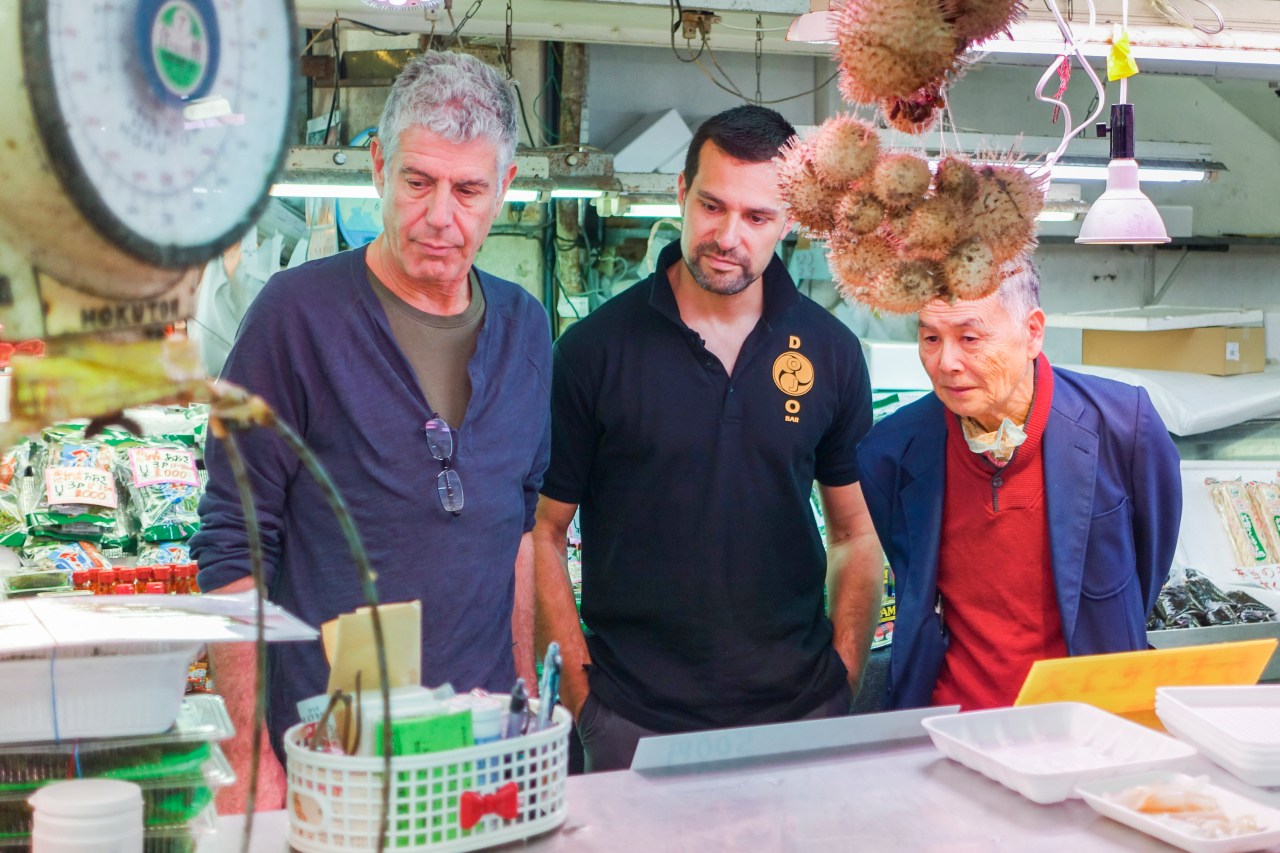
Kenneth Ehman: Okinawan-American travel writer, author of The Okinawa Explorer: A Complete Guidebook to Okinawa.
Sumiko Yoseyama: entertainer who began singing at American bases after the war.
Vivian Takushi: Sumiko Yoseyama’s niece, who has lived both in Okinawa and the U.S.
Tetsuhiro Hokama: legendary master of the gōjū-ryū style of karate.
James Pankiewicz: black belt in shōrin-ryIū karate and translator for most of the karate masters on the island.
Masahide Ota: former governor of Okinawa and World War II survivor.
Yoda Keiji: pig farmer and pork distributor.
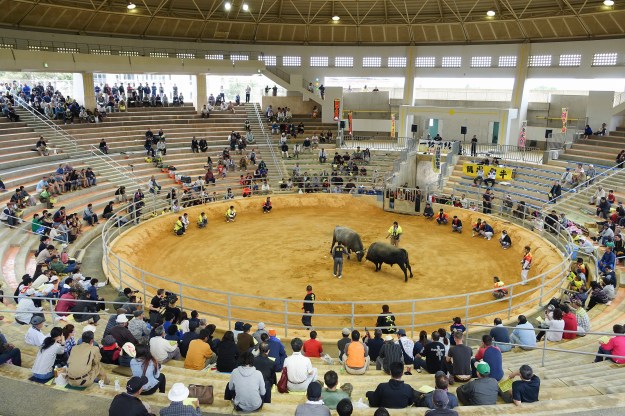
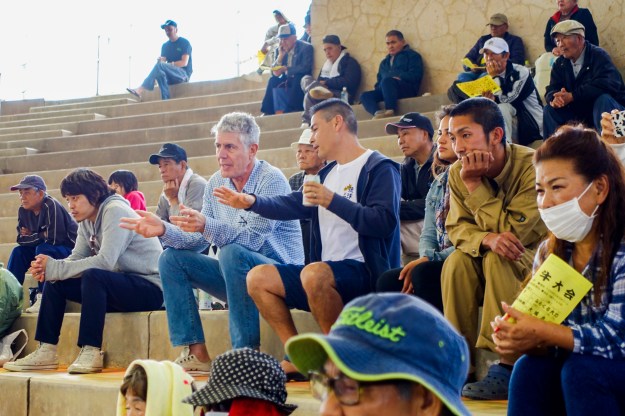
Lingo
Taco rice: a culinary creation (or “mutant classic,” per Bourdain) made for the American soldiers looking for food that reminds them of home.
Tōgyū: bull sumo, also known as oshi sumo; tōgyū started as early as the 17th century with farmers pitting bull against bull. Agricultural communities love it so much that it was briefly banned in some places because farmers were spending too much time at the fights and not enough time growing sugar cane.
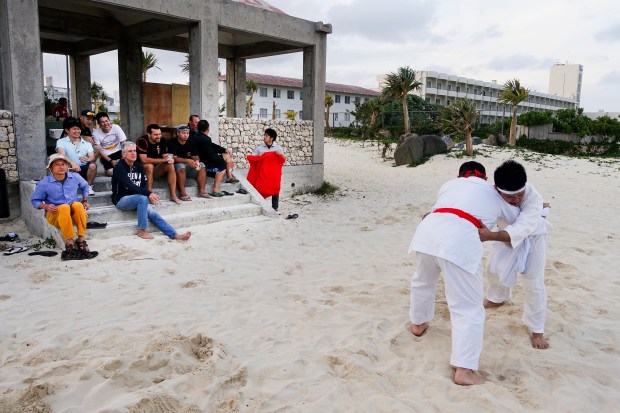
Typhoon of Steel: Okinawan expression for the U.S. invasion of the island on April 1, 1945.
Gōjū-ryū: An Okinawan style of karate; “Go” means hard linear attacks. Closed hand strikes and kicks. “Ju”, means soft, open hand, circular, blocking, sweeping, and takedown moves
Tegumi: Okinawan wrestling, known as Okinawan sumo; the wrestler’s hands are wrapped in the opponent’s belt, and the objective is to get them on their back.
A distinct culture
Okinawa is the largest of over 100 islands making up the Ryukyu island chain. It’s just over 300 miles from the mainland—but worlds apart.
Okinawans and Japanese consider themselves to be of different ethnicities. Traditionally, they have spoken two different languages, and culturally, culinarily, and in many other ways they look in different directions. Okinawans are known for a less frenetic, self-serious attitude than the Japanese mainlanders.
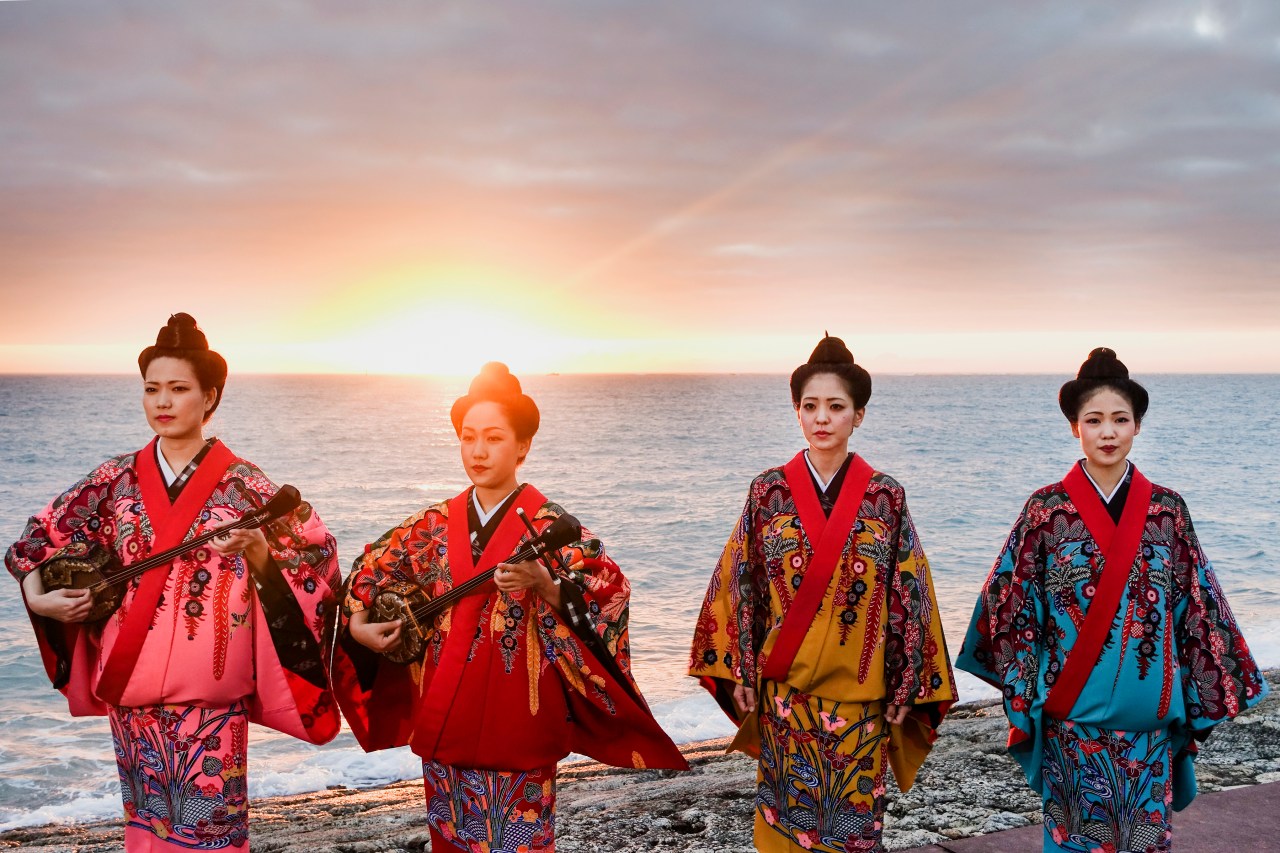
Fists are for wimps
Karate is one of Okinawa’s chief exports, Bourdain explains. Watch Tetsuhiro Hokama, legendary master of the gōjū-ryū karate style, demonstrate—on Bourdain!—how a martial artist can take down opponents with just a few fingers, using what the master calls “human engineering,” or pressure points located throughout the body.
